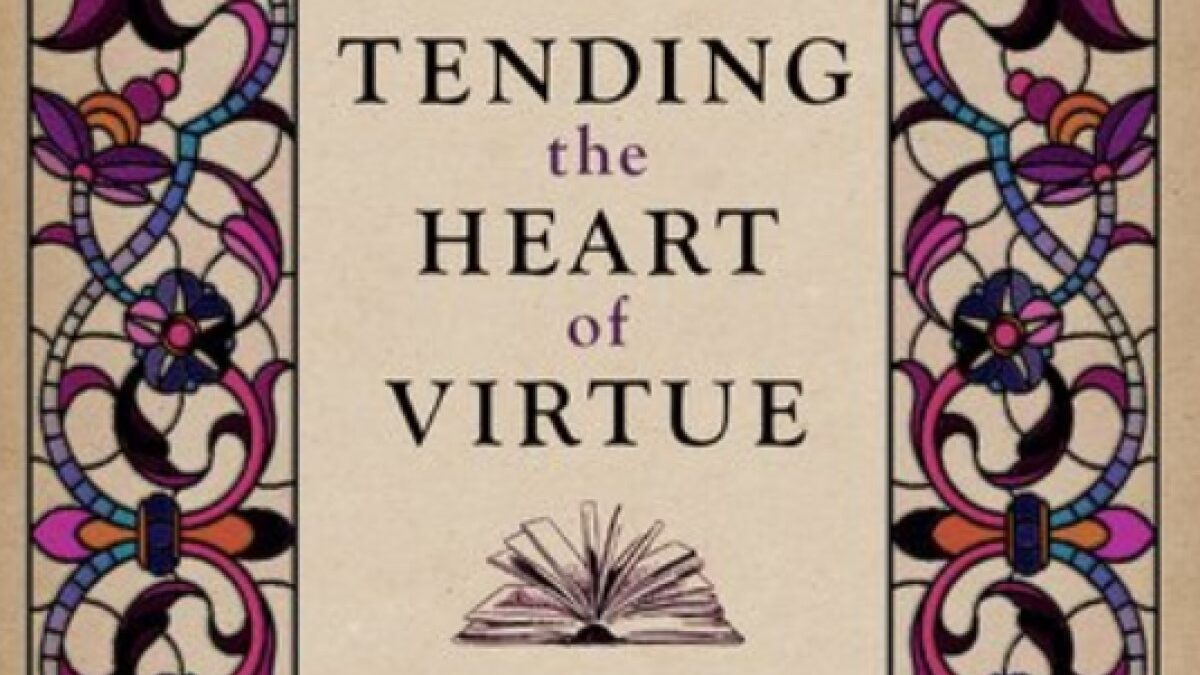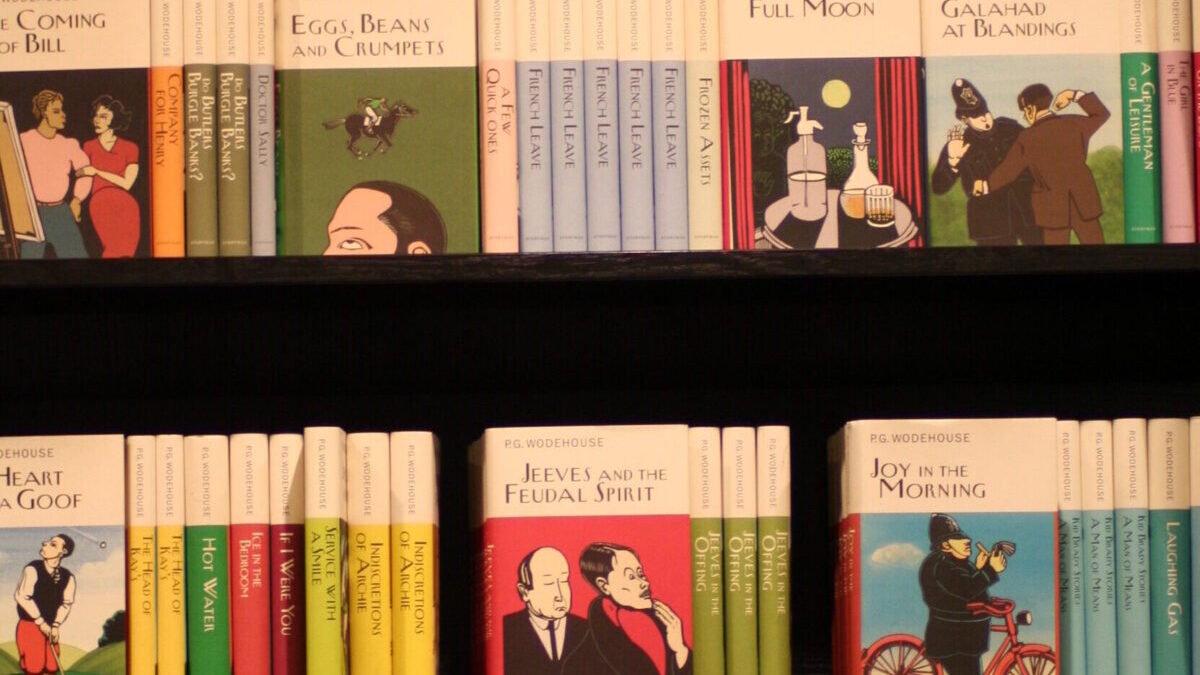Like the rest of the humanities, the English major has been dead in the West for decades now. It survives in name, of course, but has been turned inside out. Its aim has been reversed, from learning to understand human and divine natures to hating these and seeking their destruction.
One still can pursue the original aim of literature. This quest must, however, be taken today as historically: individually or in small companies.
One of great literature’s living guides includes Vigen Guroian, a now-retired professor of religious studies at the University of Virginia. Earlier this year, Oxford University Press released his second edition of “Tending the Heart of Virtue: How Classic Stories Awaken a Child’s Moral Imagination.”
Reading several years ago his first edition, published in 1998 (a year that seems like another universe), inspired me to look up Guroian’s catalog and buy his 2005 “Rallying the Really Human Things,” then after last Christmas to grab the audiobook from Mars Hill of his “Inheriting Paradise: Meditations on Gardening.” That’s where I first heard Guroian’s voice. It’s the voice of a grandfather with many stories worth the time to listen.
In the updated “Tending the Heart of Virtue,” Guroian unlocks the stories of others. He focuses on fairy stories that seem ancient in heart even when written in the last century. He often takes issue with prominent scholarship on these stories but focuses more on the stories than their would-be interpreters.
Richness Descended from Faith
Guroian nourishes a key quality that many postmodern academics disdain: Orthodox Christianity. It makes him a faithful and awe-inducing unlocker of tales.
Technically, Guroian is Armenian Orthodox and at U-Virginia taught Christianity specifically. But he is also small-o orthodox, as in an adherent of the universal Christian creeds. In this, his analysis transcends what some would call “denominational” ties, and bears the commonality of other beloved Christian writers such as C.S. Lewis, whom he cites at several appropriate points.
The book is a master class not just in literature, or fairy tales, but in the universal archetypes that animate the deepest and best stories. Guroian does this without overly psychologizing the tales, a welcome relief from today’s story-murdering post-Freudian, post-Jungian, and post-modern crit-lit “analysis.”
Guroian’s analysis shows what’s inside the stories in a way that heightens the wonder of reading them, rather than killing the literature with analytic dissection, identity politics, or nihilism. He shows his command of the critical literature on the tales he’s illuminating without diverting attention to them from the main topic. He brings them up to add or shape their ideas into his own, which always return to the story itself.
This makes his work a real treat, as well as an outlier. It makes this book accessible and delightful to anyone who enjoys stories and wonders what makes them work, rather than self-described “experts” whose main trick is lavish incoherence.
Stories Shape Souls
Throughout, Guroian pays close attention to how the stories we listen to shape our habits, into either virtue or vice. Fairy tales, he argues, illustrate virtue and its opposite, and thus can teach morals in a way that reaches deep into the heart, not just the intellect.
“Fairy tales and modern fantasy stories project fantastic other worlds, but they also pay close attention to real moral ‘laws’ of character and virtue,” Guroian writes (p. 35). “These laws ought not to be high-handedly shoved down the throats of children (or of anyone else). More accurately, they are norms of behavior that obtain in patterns of relation between agent, act, other, and the world. … [These norms] become habit, however, only when they are lived, or, as in the case of fairy tales, experienced vicariously and imaginatively through the artful delineation of character and plot in story. Thus, while fairy tales are not a substitute for life experience, they have the great capacity to shape our moral constitution without the shortcomings of either rigidly dogmatic schooling or values-clarification education.”
When we listen to stories, our brain waves come to parallel the events we hear. Stories do indeed, as Aristotle knew without the aid of scanning machines, give us vicarious experiences. They shape how we think and therefore what we come to expect, the patterns that we will use as frames for our own experiences, and our understanding of the world.
For that reason, as Aristotle also knew, stories are both wonderful and dangerous. They shape the norms we internalize, even — perhaps especially — without us realizing it. This is why it’s more important to be careful about what we put into our souls than what we put into our bodies. The eyes and ears are portals into the soul. And they can be accessed intimately through storytelling.
Guroian examines fairy tales that he argues aim to develop our virtue. He helps explain exactly how such a complicated and delicate thing could be done using plot points such as mirror shards in a little boy’s eyes and a nightingale’s song.
Small Plot Changes Can Matter a Lot
He explains why the Disney versions of the old Grimm’s fairy tales subvert the original moral meanings in the stories, and turn them into at best metaphysical pablum and at worst poison. On these grounds, he takes a few swipes at figures such as Charles Perrault.
He shows why it entirely matters whether the storyteller has a Christian or a pagan worldview, and how that can be communicated in just a few seemingly minor edits to an old tale. For example, here are some of his comments on versions of Cinderella:
Perrault neither hints nor suggests that there is a lasting filial devotion of daughter to mother. In the Grimms’ fairyland, however, as in the Christian world, birth and death are conjoined, even as they also are in counterpoint to each other. It is not foreordained that after her death Cinderella’s mother should drop out of her daughter’s life. In other words, in the Grimm’s fairyland there exists a communion not only among the living but also between the living and the dead. Death, though it is real and final, is not meaningless, and the dead have a role in the lives of the living.
Throughout, it is clear that Guroian’s Christian piety has fertilized his understanding of fairy stories. This makes his explanations so much richer and more satisfying than those from, for example, the formerly celebrated, now controversial, psychologist Bruno Bettelheim.
The Bible and Christian traditions, of course, teem with archetypes. Indeed, Christians would call them the original archetypes. Scripture is rich with analogies, word pictures, metaphors — all forms of embodied word. One who has steeped himself in its true mythology is well prepared to understand other forms of truth expressed in word pictures.
This is ultimately why Western literature — and arts — is now dead. Those who call themselves its guardians have detached themselves from the source of all culture: religion. This is why the humanities are dead in most universities.
Great literature lives eternally, however, for all who know where to look. Guroian’s “Tending the Heart” is one guidebook for rediscovering this lost and ancient path to wisdom.









